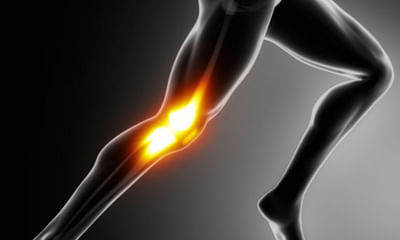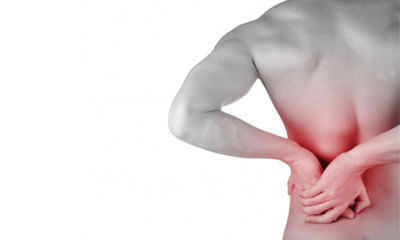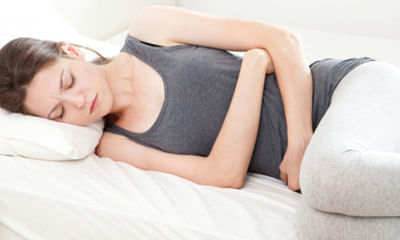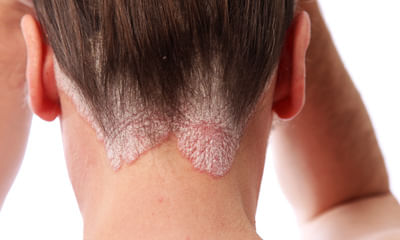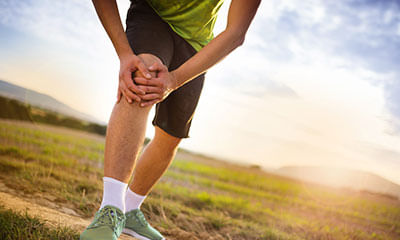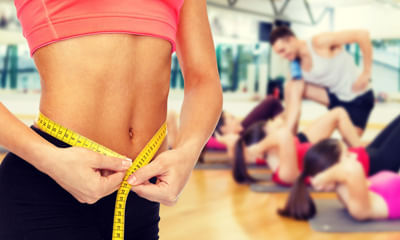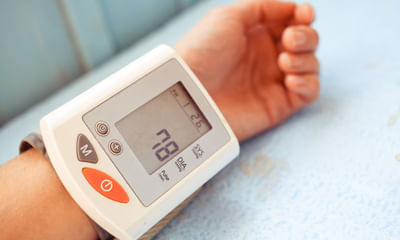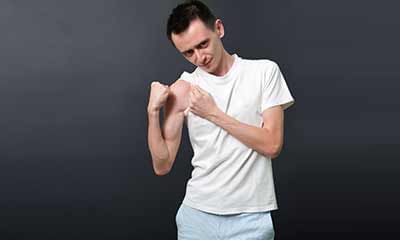Side Effects Of Eating Egg
I have pain around the left knee joint first and around lateral side, now getting stiffness and locking, mri old one sho ...
Ask Free Question
Try to offload joint which is less of using stairs, sitting on chair, avoid sitting cross leg. Along with quadriceps strength exercises. Thanks.
My back thigh paining I can't stand on foot ,rear knee join so much pai can't stand and walk leg too weak can't wear sli ...
Ask Free Question
This is a general knee pain and for this you can follow these measures: one keep a pillow right under the knee while sleeping, next is you can keep ice in the painful area for about 5--10 minutes, it looks like you are is important to check that. Anaemia always leads to the symptoms of being tired and also having body pain though there may not be any pathological reasons for knee pain. With knee exercises you will definitely feel better and muscles must be strengthened. Ice therapy would definitely help to reduce the inflammation. We also advise you to use knee cap uuwhich would help to prevent the knee from damaging further and also to maintain the quadriceps muscle tone. Stiffness have developed due to weakness of the ligaments &inflammed cartilage. Specific knee exercises will also help ie. Keeping ball underneath the knee and keep pressing it. That's the simple exercise which will help you to strengthen the knee. • ultrasound- which heals the damaged tissues and heals • electric stimulation / ift- which reduces the pain • kinesiology taping • application of heat or ice • soft tissue massages or knee joint mobilization 5 do’s & don’ts to reduce your knee pain. 1. Don’t take too much rest- not only your body muscles may become weaker even your joint’s pain may become worse. Take consultation from your physiotherapist to guide you with knee pain exercises which are safe for your knees & keep doing it. 2. Do exercise– exercises help in strengthening the muscles, increase flexibility & also support your knee. You can also do swimming, walking, elliptical machines & bicycles, etc. 3. Don’t avoid your weight– excess weight may increase the stress on your knee and if you have inflammatory arthritis then it may become worse. You don’t need to have ideal weight, you just need to start working to reduce the weight. 4. Rice -this process is good for joint pain caused due to minor injury or an arthritis. • • r (rest) – give some rest to your knees. • I (ice) – massage your knees with ice to reduce swelling. • c (compression)- start wearing compression bandage. • e (elevation)- keep your knee elevated. 5. Don’t wear bad shoes- we actively wear shoes in our daily life for hours without noticing how it can affect your knees badly. So, if you are facing knee pain, then check your shoes first. Is it giving you good comfort? If not then change it urgently. The importance of buying braces and splints from us – orthopaedic support braces we suggest you to wear knee brace which is available at our clinic. If you want you can buy from us, if you are far away from chennai we can send you by courier. The reason why we are conveying you to buy from us is we can demonstrate over the videocall (using whatsapp) and also we can monitor you throughout when to wear it and how long to wear it. And also if you find any difficulty wearing the brace you can also revert back to us for few more suggestions and we can propose you good solution how to go about it. Resisted terminal knee extension: make a loop with a piece of elastic tubing by tying a knot in both ends. Close the knot in a door at knee height. Step into the loop with your injured leg so the tubing is around the back of your knee. Lift the other foot off the ground and hold onto a chair for balance, if needed. Bend the knee with tubing about 45 degrees. Slowly straighten your leg, keeping your thigh muscle tight as you do this. Repeat 15 times. Do 2 sets of 15. If you need an easier way to do this, stand on both legs for better support while you do the exercise. Standing calf stretch: stand facing a wall with your hands on the wall at about eye level. Keep as arthritis is very common that you get generally bilaterally. Ice therapy would definitely help to reduce the inflammation. We also advise you to use knee cap which would help to prevent the knee from damaging further and also to maintain the quadriceps muscle tone 1. Heel and calf stretch to do this stretch: 1. Stand facing a wall. 2. Place your hands on the wall and move one foot back as far as you can comfortably. Toes on both feet should be facing forward, heels flat, with a slight bend in your knees. 3. Lean into the stretch and hold for 30 seconds. You should feel the stretch in your back leg. 4. Change legs and repeat. 5. Do this stretch twice for both legs. Short arc quad / isometeric quad exercise the short arc quad exercise is a great way to really focus in on properly contracting your quadriceps muscles. Here is how you do it: lie on your back and use a yoga block or basketball to prop your knee up. Slowly straighten your bent knee until it is all the way straight. Tighten your quad muscle with your toes pointed toward the ceiling and hold it tight for five seconds. Slowly lower your leg down. Repeat for 15 repetitions. Quadriceps, isometric (strength) this exercise is for an injured right knee. Switch sides if the injury is to your left knee. 1. Sit on the floor with your straight in front of you. Bend your left knee up and put your left foot flat on the floor. Right leg 2. Flex your right foot and tighten the thigh muscles of your right leg. Press the back of your right knee toward the floor. Don’t arch your back or hunch your shoulders. 3. Hold for 5 to 10 seconds. Then relax. 4. Repeat 10 times, or as instructed. 5. Do this exercise 3 times a day, or as instructed. 2. Quadriceps stretch to do this stretch: 1. Stand next to a wall or use a chair for support. Your feet should be shoulder-width apart. 2. Bend one knee so your foot goes up toward your glutes. 3. Grab your ankle and gently pull it toward your glutes as far as you can comfortably. 4. Hold for 30 seconds. 5. Return to the starting position and change legs. 6. Repeat 2 times on each side. Hamstring stretch • take a break from strenuous activities to allow the injury to heal. • use a cane or crutches to avoiding putting your full weight on your injured leg. • apply ice packs several times a day to relieve pain and reduce swelling. • wrap the injured area with a compression bandage or wear compression shorts to minimize swelling. • rest with your leg elevated above the level of your heart, if possible, to improve drainage and minimize swelling. To do this stretch: to do this stretch: 1. For this stretch, you can use a mat to add cushioning under your back. 2. Lie down on the floor or mat and straighten both legs. Or, if it’s more comfortable, you can bend both knees with your feet flat on the floor. 3. Lift one leg off the floor. 4. Place your hands behind your thigh, but below the knee, and gently pull your knee toward your chest until you feel a slight stretch. This shouldn’t be painful. 5. Hold for 30 seconds. 6. Lower and change legs. 7. Repeat 2 times on each side. Strengthening exercises 5. Half squat to do this exercise: 1. Get into a standing squat position with your feet shoulder-width apart. Place your hands on your hips or out in front of you for balance. 2. Looking straight ahead, slowly squat down about 10 inches. This is the halfway point to a full squat. 3. Pause for a few seconds, then stand up by pushing through your heels. 4. Do 2 to 3 sets of 10 repetitions. 5. Calf raises to do this exercise: 1. Stand with your feet shoulder-width apart. Position yourself next to a wall or hold on to the back of a chair for support. 2. Lift both your heels off the ground so that you’re standing on the balls of your feet. 3. Slowly lower your heels to the starting position. Control is important with this exercise for strengthening your calf muscles. 4. Do 2 to 3 sets of 10 repetitions. 6. Hamstring curl 7. Leg extensions to do this exercise: 1. Sit up tall in a chair. 2. Put your feet flat on the floor, hip-width apart. 3. Look straight ahead, contract your thigh muscles, and extend one leg as high as possible without raising your buttocks off the chair. 4. Pause, then lower to the starting position. 5. Do 2 to 3 sets of 10 repetitions for each leg. 8. Straight leg raises to do this exercise: 1. For this exercise, you can use a mat to add cushioning under your back. 2. Lie down on the floor with one leg bent and one leg straight out in front of you. 3. Contract the quadricep of your straight leg and slowly raise it up off the floor until it’s the same height as your bent knee. 4. Pause at the top for 5 seconds, then lower to the starting position 5. Do 2 to 3 sets of 10 repetitions for each leg. 9. Side leg raises to do this exercise: 1. Lie on your side with your legs stacked on top of each other. Cradle your head in your hand, and place your other hand on the floor in front of you. 2. Raise your top leg as high as you comfortably can. You should feel this on the side of your hips. 3. Pause briefly at the top, then lower your leg. 4. Do 2 to 3 sets of 10 repetitions for each leg. 10. Prone leg raises to do this exercise: 1. For this exercise, you can use a mat to add cushioning beneath you. 2. Lie on your stomach with your legs straight out behind you. You can let your head rest on your arms. 3. Engage your glute and hamstring muscles in your left leg and lift your leg as high as you exercise. 4. Hold your leg in the lifted position for 5 seconds. 5. Lower your leg, rest for 2 seconds, then repeat. 6. Do 2 to 3 sets of 10 repetitions for each leg. Lifestyle and home remedies rest. Take a break from your normal activities to reduce repetitive strain on your knee, give the injury time to heal and help prevent further damage. A day or two of rest may be all you need for a minor injury. More severe damage is likely to need a longer recovery time. Ice. Ice reduces both pain and inflammation. A bag of frozen peas works well because it covers your whole knee. You also can use an ice pack wrapped in a thin towel to protect your skin. Although ice therapy is generally safe and effective, don't use ice for longer than 20 minutes at a time because of the risk of damage to your nerves and skin. Heat. You may experience temporary pain relief by applying a heat pack or hot-water bottle to the painful area on your knee. Compression. This helps prevent fluid buildup in damaged tissues and maintains knee alignment and stability. Look for a compression bandage that's lightweight, breathable and self-adhesive. It should be tight enough to support your knee without interfering with cot oirculation. Elevation. To help reduce swelling, try propping your injured leg on pillows or sitting in a recliner. Home remedies and prevention: •drinking plenty of water. Over-the-counter nsaids (nonsteroidal anti-inflammatory drugs), such as ibuprofen (advil, motrin). •home remedies may be very beneficial for the management of chronic gout, as well. The dietary modifications detailed above can be very effective in certain patients. Drinking plenty of water to remain well-hydrated can be beneficial in preventing gout attacks. •limit or avoid alcohol. Talk with your doctor about whether any amount or type of alcohol is safe for you. Recent evidence suggests that beer may be particularly likely to increase the risk of gout symptoms, especially in men. •get your protein from low-fat dairy products. Low-fat dairy products may actually have a protective effect against gout, so these are your best-bet protein sources. •limit your intake of meat, fish and poultry. A small amount may be tolerable, but pay close attention to what types — and how much — seem to cause problems for you. •maintain a desirable body weight. Choose portions that allow you to maintain a healthy weight. Losing weight may decrease uric acid levels in your body. But avoid fasting or rapid weight loss, since doing so may temporarily raise uric acid levels. Food to eat: •fresh fruits and vegetables such as berries, oranges, bell pepper and pineapple. •low-fat dairy products, such as yogurt and skimmed milk. •nuts including nut butter ••s such as almond butter and peanut butter. •whole grains. •potatoes, rice, whole-grain bread and pasta. •eggs (in moderation). •oils such as olive oil.•flax and other seeds. •plenty of water and other non-sugary and non-alcoholic drinks. •vitamin c. Supplements containing vitamin c may reduce the levels of uric acid in your blood. •cherries have been lower levels of uric acid, as well as reduce the number of gout attacks. •decaffeinated coffee and caffein will lower uric acid levels. Foods to be avoided: •alcohol is a major trigger for gout attacks. Beer is especially bad for gout since it is rich in purines. •certain fish, seafood and shellfish, including anchovies, trout, sardines, herring, codfish, mussels, codfish, scallops and haddock. •organ meats such as liver, kidney, sweetbreads and brain. People with gout, however, can have a moderate intake of lean meats such as chicken and turkey. •red meat including bacon, turkey, veal and venison.•dried beans and peas. •food products containing a high amount of fructose such as soda and some juices, cereal, ice cream, candy and.
I am a 76 year old male with severe arthritis and gout I use arthrexin for a long time but then change over to diclo fla ...
Ask Free Question
•drinking plenty of water. Over-the-counter nsaids (nonsteroidal anti-inflammatory drugs), such as ibuprofen (advil, motrin). •home remedies may be very beneficial for the management of chronic gout, as well. The dietary modifications detailed above can be very effective in certain patients. Drinking plenty of water to remain well-hydrated can be beneficial in preventing gout attacks. •limit or avoid alcohol. Talk with your doctor about whether any amount or type of alcohol is safe for you. Recent evidence suggests that beer may be particularly likely to increase the risk of gout symptoms, especially in men. •get your protein from low-fat dairy products. Low-fat dairy products may actually have a protective effect against gout, so these are your best-bet protein sources. •limit your intake of meat, fish and poultry. A small amount may be tolerable, but pay close attention to what types — and how much — seem to cause problems for you. •maintain a desirable body weight. Choose portions that allow you to maintain a healthy weight. Losing weight may decrease uric acid levels in your body. But avoid fasting or rapid weight loss, since doing so may temporarily raise uric acid levels. Food to eat: •fresh fruits and vegetables such as berries, oranges, bell pepper and pineapple. •low-fat dairy products, such as yogurt and skimmed milk. •nuts including nut butter ••s such as almond butter and peanut butter. •whole grains. •potatoes, rice, whole-grain bread and pasta. •eggs (in moderation). •oils such as olive oil.•flax and other seeds. •plenty of water and other non-sugary and non-alcoholic drinks. •vitamin c. Supplements containing vitamin c may reduce the levels of uric acid in your blood. •cherries have been lower levels of uric acid, as well as reduce the number of gout attacks. •decaffeinated coffee and caffein will lower uric acid levels. Foods to be avoided: •alcohol is a major trigger for gout attacks. Beer is especially bad for gout since it is rich in purines. •certain fish, seafood and shellfish, including anchovies, trout, sardines, herring, codfish, mussels, codfish, scallops and haddock. •organ meats such as liver, kidney, sweetbreads and brain. People with gout, however, can have a moderate intake of lean meats such as chicken and turkey. •red meat including bacon, turkey, veal and venison.•dried beans and peas. •food products containing a high amount of fructose such as soda and some juices, cereal, ice cream, candy and junk food.
I'm having psoriasis for the past 8 years. Because of this I need to avoid nov veg foods like egg, chicken, fish and mut ...
Ask Free Question
There is no need to avaoid any food. Only those food that you find trigger or worsen your problem. U can do the following to ease the symptoms of psoriasis 1. Prevent dry skin use a humidifier to keep the air in your home or office moist. This can help prevent dry skin before it starts. Sensitive skin moisturizers are also great at keeping your skin supple and preventing plaques from forming. 2. Avoid fragrances most soaps and perfumes have dyes and other chemicals in them that may irritate your skin. They can make you smell great, but they also can inflame psoriasis. 3. Eat healthfully diet may play a role in managing psoriasis. Eliminating red meat and fatty snacks may help reduce flare-ups triggered by such foods. Cold water fish, seeds, nuts, and omega-3 fatty acids are known for their ability to reduce inflammation. 4. Soak your body hot water may be an irritant for your skin. However, a lukewarm bath can soothe the itching and infiltrate scales and plaques. Moisturize immediately after your bath for double benefits. 5. Reduce stress any chronic condition like psoriasis can be a source of stress. This can often turn into a vicious cycle because stress itself can worsen psoriasis symptoms. In addition to reducing stress whenever possible, consider incorporating stress-reducing practices such as yoga and meditation. 6. Avoid alcohol alcohol is a trigger for many people who have psoriasis. 7. Stop smoking avoid tobacco it can make your symptoms more severe. For this homeopathic treatment is very effective for more details you can consult me.
8 months ago there was medial meniscus tear which came in that time mri which was grade 2 there was pain in walking afte ...
Ask Free Question
You need to consume good protein and iron diet in your body which will help you to break the fatigue and general body pain. However non veg foods definitely makes you to get increased with the toxin levels in the body and it makes your knee to have less fluid content in the system. In general we suggest patients who has knee pain to eat more water content vegetables which will definitely help you to feel better. Ice therapy would definitely help to reduce the inflammation. We also advise you to use knee cap which would help to prevent the knee from damaging further and also to maintain the quadriceps muscle tone. Stiffness have developed due to weakness of the ligaments &inflammed cartilage. Specific knee exercises will also help ie. Keeping ball underneath the knee and keep pressing it. That's the simple exercise which will help you to strengthen the knee. • ultrasound- which heals the damaged tissues and heals • electric stimulation / ift- which reduces the pain • kinesiology taping • application of heat or ice • soft tissue massages or knee joint mobilization 5 do’s & don’ts to reduce your knee pain. 1. Don’t take too much rest- not only your body muscles may become weaker even your joint’s pain may become worse. Take consultation from your physiotherapist to guide you with knee pain exercises which are safe for your knees & keep doing it. 2. Do exercise– exercises help in strengthening the muscles, increase flexibility & also support your knee. You can also do swimming, walking, elliptical machines & bicycles, etc. 3. Don’t avoid your weight– excess weight may increase the stress on your knee and if you have inflammatory arthritis then it may become worse. You don’t need to have ideal weight, you just need to start working to reduce the weight. 4. Rice -this process is good for joint pain caused due to minor injury or an arthritis. • • r (rest) – give some rest to your knees. • I (ice) – massage your knees with ice to reduce swelling. • c (compression)- start wearing compression bandage. • e (elevation)- keep your knee elevated. 5. Don’t wear bad shoes- we actively wear shoes in our daily life for hours without noticing how it can affect your knees badly. So, if you are facing knee pain, then check your shoes first. Is it giving you good comfort? If not then change it urgently. The importance of buying braces and splints from us – orthopaedic support braces we suggest you to wear knee brace which is available at our clinic. If you want you can buy from us, if you are far away from chennai we can send you by courier. The reason why we are conveying you to buy from us is we can demonstrate over the videocall and also we can monitor you throughout when to wear it and how long to wear it. And also if you find any difficulty wearing the brace you can also revert back to us for few more suggestions and we can propose you good solution how to go about it. Resisted terminal knee extension: make a loop with a piece of elastic tubing by tying a knot in both ends. Close the knot in a door at knee height. Step into the loop with your injured leg so the tubing is around the back of your knee. Lift the other foot off the ground and hold onto a chair for balance, if needed. Bend the knee with tubing about 45 degrees. Slowly straighten your leg, keeping your thigh muscle tight as you do this. Repeat 15 times. Do 2 sets of 15. If you need an easier way to do this, stand on both legs for better support while you do the exercise. Standing calf stretch: stand facing a wall with your hands on the wall at about eye level. Keep as arthritis is very common that you get generally bilaterally. Ice therapy would definitely help to reduce the inflammation. We also advise you to use knee cap which would help to prevent the knee from damaging further and also to maintain the quadriceps muscle tone 1. Heel and calf stretch to do this stretch: 1. Stand facing a wall. 2. Place your hands on the wall and move one foot back as far as you can comfortably. Toes on both feet should be facing forward, heels flat, with a slight bend in your knees. 3. Lean into the stretch and hold for 30 seconds. You should feel the stretch in your back leg. 4. Change legs and repeat. 5. Do this stretch twice for both legs. Short arc quad / isometeric quad exercise the short arc quad exercise is a great way to really focus in on properly contracting your quadriceps muscles. Here is how you do it: lie on your back and use a yoga block or basketball to prop your knee up. Slowly straighten your bent knee until it is all the way straight. Tighten your quad muscle with your toes pointed toward the ceiling and hold it tight for five seconds. Slowly lower your leg down. Repeat for 15 repetitions. Quadriceps, isometric (strength) this exercise is for an injured right knee. Switch sides if the injury is to your left knee. 1. Sit on the floor with your right leg straight in front of you. Bend your left knee up and put your left foot flat on the floor. 2. Flex your right foot and tighten the thigh muscles of your right leg. Press the back of your right knee toward the floor. Don’t arch your back or hunch your shoulders. 3. Hold for 5 to 10 seconds. Then relax. 4. Repeat 10 times, or as instructed. 5. Do this exercise 3 times a day, or as instructed. 2. Quadriceps stretch to do this stretch: 1. Stand next to a wall or use a chair for support. Your feet should be shoulder-width apart. 2. Bend one knee so your foot goes up toward your glutes. 3. Grab your ankle and gently pull it toward your glutes as far as you can comfortably. 4. Hold for 30 seconds. 5. Return to the starting position and change legs. 6. Repeat 2 times on each side. Hamstring stretch • take a break from strenuous activities to allow the injury to heal. • use a cane or crutches to avoiding putting your full weight on your injured leg. • apply ice packs several times a day to relieve pain and reduce swelling. • wrap the injured area with a compression bandage or wear compression shorts to minimize swelling. • rest with your leg elevated above the level of your heart, if possible, to improve drainage and minimize swelling. To do this stretch: to do this stretch: 1. For this stretch, you can use a mat to add cushioning under your back. 2. Lie down on the floor or mat and straighten both legs. Or, if it’s more comfortable, you can bend both knees with your feet flat on the floor. 3. Lift one leg off the floor. 4. Place your hands behind your thigh, but below the knee, and gently pull your knee toward your chest until you feel a slight stretch. This shouldn’t be painful. 5. Hold for 30 seconds. 6. Lower and change legs. 7. Repeat 2 times on each side. Strengthening exercises 5. Half squat to do this exercise: 1. Get into a standing squat position with your feet shoulder-width apart. Place your hands on your hips or out in front of you for balance. 2. Looking straight ahead, slowly squat down about 10 inches. This is the halfway point to a full squat. 3. Pause for a few seconds, then stand up by pushing through your heels. 4. Do 2 to 3 sets of 10 repetitions. 5. Calf raises to do this exercise: 1. Stand with your feet shoulder-width apart. Position yourself next to a wall or hold on to the back of a chair for support. 2. Lift both your heels off the ground so that you’re standing on the balls of your feet. 3. Slowly lower your heels to the starting position. Control is important with this exercise for strengthening your calf muscles. 4. Do 2 to 3 sets of 10 repetitions. 6. Hamstring curl 7. Leg extensions to do this exercise: 1. Sit up tall in a chair. 2. Put your feet flat on the floor, hip-width apart. 3. Look straight ahead, contract your thigh muscles, and extend one leg as high as possible without raising your buttocks off the chair. 4. Pause, then lower to the starting position. 5. Do 2 to 3 sets of 10 repetitions for each leg. 8. Straight leg raises to do this exercise: 1. For this exercise, you can use a mat to add cushioning under your back. 2. Lie down on the floor with one leg bent and one leg straight out in front of you. 3. Contract the quadricep of your straight leg and slowly raise it up off the floor until it’s the same height as your bent knee. 4. Pause at the top for 5 seconds, then lower to the starting position 5. Do 2 to 3 sets of 10 repetitions for each leg. 9. Side leg raises to do this exercise: 1. Lie on your side with your legs stacked on top of each other. Cradle your head in your hand, and place your other hand on the floor in front of you. 2. Raise your top leg as high as you comfortably can. You should feel this on the side of your hips. 3. Pause briefly at the top, then lower your leg. 4. Do 2 to 3 sets of 10 repetitions for each leg. 10. Prone leg raises to do this exercise: 1. For this exercise, you can use a mat to add cushioning beneath you. 2. Lie on your stomach with your legs straight out behind you. You can let your head rest on your arms. 3. Engage your glute and hamstring muscles in your left leg and lift your leg as high as you exercise. 4. Hold your leg in the lifted position for 5 seconds. 5. Lower your leg, rest for 2 seconds, then repeat. 6. Do 2 to 3 sets of 10 repetitions for each leg. Lifestyle and home remedies rest. Take a break from your normal activities to reduce repetitive strain on your knee, give the injury time to heal and help prevent further damage. A day or two of rest may be all you need for a minor injury. More severe damage is likely to need a longer recovery time. Ice. Ice reduces both pain and inflammation. A bag of frozen peas works well because it covers your whole knee. You also can use an ice pack wrapped in a thin towel to protect your skin. Although ice therapy is generally safe and effective, don't use ice for longer than 20 minutes at a time because of the risk of damage to your nerves and skin. Heat. You may experience temporary pain relief by applying a heat pack or hot-water bottle to the painful area on your knee. Compression. This helps prevent fluid buildup in damaged tissues and maintains knee alignment and stability. Look for a compression bandage that's lightweight, breathable and self-adhesive. It should be tight enough to support your knee without interfering with circulation. Elevation. To help reduce swelling, try propping your injured leg on pillows or sitting in a recliner. Home remedies and prevention: •drinking plenty of water. Over-the-counter nsaids (nonsteroidal anti-inflammatory drugs), such as ibuprofen (advil, motrin). •home remedies may be very beneficial for the management of chronic gout, as well. The dietary modifications detailed above can be very effective in certain patients. Drinking plenty of water to remain well-hydrated can be beneficial in preventing gout attacks. •limit or avoid alcohol. Talk with your doctor about whether any amount or type of alcohol is safe for you. Recent evidence suggests that beer may be particularly likely to increase the risk of gout symptoms, especially in men. •get your protein from low-fat dairy products. Low-fat dairy products may actually have a protective effect against gout, so these are your best-bet protein sources. •limit your intake of meat, fish and poultry. A small amount may be tolerable, but pay close attention to what types — and how much — seem to cause problems for you. •maintain a desirable body weight. Choose portions that allow you to maintain a healthy weight. Losing weight may decrease uric acid levels in your body. But avoid fasting or rapid weight loss, since doing so may temporarily raise uric acid levels. Food to eat: •fresh fruits and vegetables such as berries, oranges, bell pepper and pineapple. •low-fat dairy products, such as yogurt and skimmed milk. •nuts including nut butter ••s such as almond butter and peanut butter. •whole grains. •potatoes, rice, whole-grain bread and pasta. •eggs (in moderation). •oils such as olive oil.•flax and other seeds. •plenty of water and other non-sugary and non-alcoholic drinks. •vitamin c. Supplements containing vitamin c may reduce the levels of uric acid in your blood. •cherries have been lower levels of uric acid, as well as reduce the number of gout attacks. •decaffeinated coffee and caffein will lower uric acid levels. Foods to be avoided: •alcohol is a major trigger for gout attacks. Beer is especially bad for gout since it is rich in purines. •certain fish, seafood and shellfish, including anchovies, trout, sardines, herring, codfish, mussels, codfish, scallops and haddock. •organ meats such as liver, kidney, sweetbreads and brain. People with gout, however, can have a moderate intake of lean meats such as chicken and turkey. •red meat including bacon, turkey, veal and venison.•dried beans and peas. •food products containing a high amount of fructose such as soda and some juices, cereal, ice cream, candy and junk food.
I’m 20 years old i’m currently 80 kg I want to lose weight I tried everything but nothing works can you suggest some med ...
Ask Free Question
Hi, any medicine or injection will only work till you use it and has its own set of side-effects. Nothing, can replace a well balanced diet and physical activity. Kindly consult a registered hospital dietician in your area, for a perfect plan based on your stats. Untill then you can follow the guidelines given below- weight is a sum total of bone, water, muscle and fat. You need to lose fat to get healthy. Eat small frequent meals every 2 -3 hours to improve metabolism and reduce fat. Have whole grain cereals like millets (bajra, jowar,ragi) and pulses and sprouts. Eat protein rich diet egg whites, sprouts (especially post workout, it will help in building muscle) and improve metabolism. Include healthy essential fat in your diet like nuts - almonds and walnuts, vegetable seeds like pumpkin, watermelon, sunflower seeds, etc. Eat fiber rich diet, it will help to gain early satiety and help you feel full - include fruits like citrus varieties, papaya and leafy vegetables in your diet. Eat heavy breakfast, as 40% of day’s energy comes from breakfast. Moderate lunch and light dinner with maximum fibre and protein’s. Avoid junk food, oily food, processed or canned foods. Drink a glass of water every hour daily to optimally hydrate the body. Exercise 40-45 minutes 4-5 times a week. Brisk walking, aerobics, jogging, skipping or any outdoor activity can be done. Sleep of 7-8 hours will help in releasing all toxins and reduce bloating thus will lead to weight loss.
Sir I am high bp patient from 1 years my age is 35 I am 90 kh he can reduce my weight. ...
Ask Free Question
Hello Take homeopathic medicine for weight loss . If you're overweight or have obesity, losing even a small amount of weight can help reduce blood pressure. Blood pressure often increases as weight increases. Regular physical activity can lower high blood pressure by about 5 to 8 mm Hg. It's important to keep exercising to keep blood pressure from rising again. As a general goal, aim for at least 30 minutes of moderate physical activity every day. Eating a diet rich in whole grains, fruits, vegetables and low-fat dairy products and low in saturated fat and cholesterol can lower high blood pressure by up to 11 mm Hg. Potassium in the diet can lessen the effects of salt (sodium) on blood pressure. The best sources of potassium are foods, such as fruits and vegetables, rather than supplements.. consult me for better result .
I am 19 female. I am taking novelon since past 6 months. I am trying to loose my weight but I feel like its stuck. Is it ...
Ask Free Question
Hello Take homeopathic treatment for loose weight without any side effects . Avoid sugary foods and drinks . Drink 8 glass water per day . Eat healthy food. Donât eat junk food . Avoid eating rice at night . Drink green tea for weight loss . Consult me if u want to result .
Hie, I am swati, 21 years old. I am 40 kg counting in underweight. Please let me know what should I take. Many people su ...
Ask Free Question
Hi, lifestyle changes is the only way to help- 1)weight is a sum total of bone, water, muscle and fat. You need to gain muscle to get healthy. Immunity of the body is based on muscles and so its important to have optimal muscle mass. 2)have a well balanced diet which has the right combination of carbohydrate, protein and fat. 3)eat 6-8 meals a day as the muscle losses will not happen. 4)have carbohydrate and protein rich food combinations like banana or mango milkshake, mix nuts and dryfruit chikkis, soya or paneer veg rolls etc. 5)include high biological value proteins which are very well absorbed like- milk, curd, paneer, meat, fish, eggs etc. 6)include essential fats like almonds, walnut, pistachios, flaxseeds etc. 7)eat on waking up and do have a bed time meal like milk and light snack. 8)do not fast or overeat as this will not help. 9)hydrate optimally by having a glass of water every hour to flush out toxins and prevent weight loss due to dehydration. 10)sleep of 9-10 hours is very crucial to gain muscle and weight.
Hello doctors, I am 33 years old. Sir main gym jaati hoon and my goal is weight loss and gain lean muscle. 0 answer main ...
Ask Free Question
Hi, weight is a sum total of bone, water, muscle and fat. You need to lose fat to get healthy and reduce your co-morbidities. Any medicine or supplement will only help till you use it so the effect is temporary. Eat small frequent meals every 2 -3 hours to improve metabolism and reduce fat. Have whole grain cereals like millets (bajra, jowar,ragi) and pulses and sprouts. Eat protein rich diet egg whites, sprouts (especially post workout, it will help in building muscle) and improve metabolism. Include healthy essential fat in your diet like nuts - almonds and walnuts, vegetable seeds like pumpkin, watermelon, sunflower seeds, etc. Eat fiber rich diet, it will help to gain early satiety and help you feel full - include fruits like citrus varieties, papaya and leafy vegetables in your diet. Eat heavy breakfast, as 40% of day’s energy comes from breakfast. Moderate lunch and light dinner with maximum fibre and protein’s. Avoid junk food, oily food, processed or canned foods. Drink a glass of water every hour daily to optimally hydrate the body. Exercise 40-45 minutes 4-5 times a week. Brisk walking, aerobics, jogging, skipping or any outdoor activity can be done. Sleep of 7-8 hours will help in releasing all toxins and reduce bloating thus will lead to weight loss.

